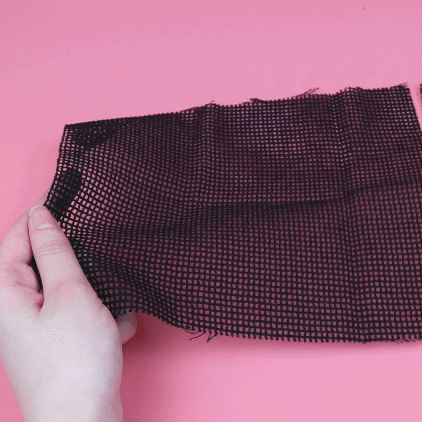How to perform measurements (Handheld)
Please watch our tutorial videos for PlasTell and FabriTell:
Step 1 - Turn the machine on
When you receive the machine, it will be in a “shipping mode” - to disable the shipping mode, plug in the power supply into the
power connector. The machine should start and say "LIFT UP".

Step 2 - Self-calibration
Please lift the machine up and hold it vertically - the sensor must not come in contact with any samples or your table while the machine is "CALIBRATING". Then, once it says "READY", you can start measuring.

Step 3 - Measure!
Your handheld is now ready to start measuring. Put the device over a sample and press the control button.
For accurate measurements, you must follow the measurement guidelines stated below.

To watch a full video on setting up your handheld device, see below:
Step 4 - Obtaining accurate results (Measurement guidelines)
Rule 1 - Place the machine flat over any samples
The sample should be as close to the detector as possible and the machine should not be tilted with respect to the sample.

Rule 2 - Avoid prints or labels
Labels and printed areas of both plastics and fabrics are often made of different material than the rest of the item. You must not measure such areas as the identification will not be accurate.

Rule 3 - Fold thin samples
Very thin plastics, such as films, should be folded before measuring. Any textiles being measured should be at least 2-3 layers thick which increases the amount of useful signal coming to the detector.

Rule 4 - Black samples may not work
Due to the carbon black pigment, most black plastics unfortunately cannot be identified.
With fabrics, the identification is typically fine for black samples but it sometimes won’t work. The pigment absorbs all the infrared light and no useful signals come to the sensor. The machine will notify you - “unknown” or “too dark”.
Rule 5 - Avoid liquids or contamination
Water or other liquids also absorb NIR light - and will negatively affect the identification.
Only measure dry samples and avoid contamination from e.g. food residues.
Rule 6 - Some samples are non-uniform
For instance, hoodies often are soft and fluffy on the inside and smooth on the outside. The label would say “60% cotton 40% polyester” but the inside is actually 100% polyester and the outside is 100% cotton.
When you scan such samples with our machine, it will say the composition of the surface - e.g. 100% cotton when you measure the outside.

Rule 7 - Measuring transparent items (PlasTell)
When measuring transparent items, please use the white target provided.
Remove the white target by sliding it out of the handheld case. Place it behind any transparent items in order to measure
them.


The white target returns the light to the device so that the infrared spectra of the sample can be measured.
